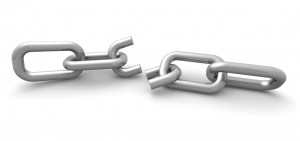You know all about on-page SEO. Your site loads quickly. Visitors are telling you how much they love your content. All of your essential tags are in order. The meta description you came up with looks great. You made sure the site is mobile-friendly. However, there is still some more work you have to do.
Off-Page SEO
What is Off-Page SEO? It is activities that you do away from your site to attract visitors, and to raise the rank of pages in the search engine results. Now, the first thing people will think of is link building. Yes, link building is important for ranking pages. But we need to take a step back. There one important step you have to take to prepare your site for off-page SEO.
Internal Page Layout
The layout of the internal pages of your site is one the most essential ranking factors to Google. In his post about Google’s 200 Ranking Factors, Brian Dean says, “The number of internal links to a page indicates its importance relative to other pages on the site.” One of the best ways to structure your internal links is with a silo structure. This type of layout makes it easy for users and search engines to find their way around your site. The silo structure connects your homepage to your category pages, and your category pages to your individual posts. This allows the link juice to flow throughout the site—not just to pages here and there.
The Number of Linking Domains and Pages
Another important ranking factor is the number of domains linking to your site. A domain with a lot of authority linking to your site looks good in Google’s eyes. Similarly, individual pages with a lot of authority linking to your site also look good to Google. Basically, links are like votes. These “votes” show the search engines that you have a quality site with quality content.
High Quality Content
Even though we are focused on off-page SEO, we have to talk about what attracts people to your site: high quality content. So what is high quality content? First, it is content that is made for users—not search engines. It’s not deceptive. You don’t want to mislead people with your content. What is unique about your content? Is it engaging? Is it focused on providing value to your readers? Is it something that people would want to share? These are things you need to think about when you’re creating content.
Forums, Q&A, Social, and Comments
Remember, this isn’t just about the content on your site. The same goes for content that you create on forums, question-and-answer sites, social media, and blog comments. Creating valuable posts on these types of sites—and leaving thoughtful and interesting blog comments—will attract people to your content. That means more links, mentions, shares, etc.
Broken Link Building
Have you ever been to a page a noticed a message that said something like “this page doesn’t exist”? Well, that is a broken link. Finding broken links on relevant pages is another off-page SEO opportunity for you. There are a number of tools you can use to help with the process. When you do find a broken link, contact the site owner and tell them about it. You could also suggest creating content for that page in exchange for a link back to your site. This probably won’t be a strategy you use a lot, but it’s a good one to have in your toolbox.
Well, that wasn’t so bad, right? Remember when it took you a while to understand just the on-page side of things? Now, it’s easy for you. In time, it’ll be the same way with off-page SEO. It’ll just become part of your process. Don’t forget, SEO is just a way to help you do one important thing: bring more awareness to your content, business, or service.

